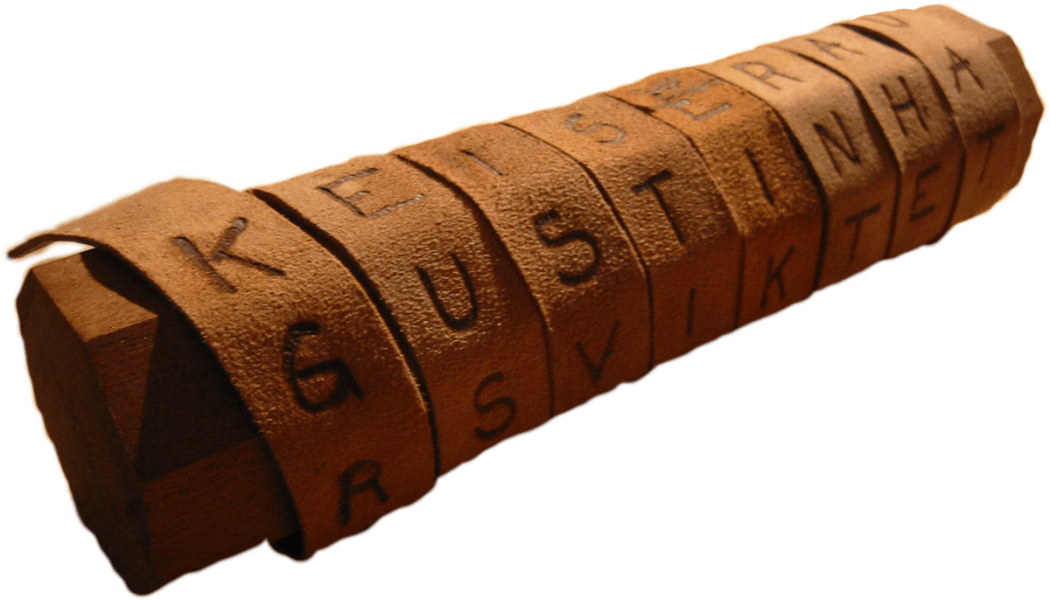Encryption isn’t just a hot topic of the digital age. It’s as old as writing itself; indeed, writing is a form of encryption to those who can’t read. Consider the example of Bellerophon: around 1200 BC, Homer described this strong but illiterate hero unknowingly carrying a message ordering his own execution. Being the hero, however, Bellerophon outwitted this death warrant by strength of arms. If he had been able to read, the message presumably would have been in some kind of secret writing, the very definition of “cryptography.”
Messages of state, of commerce, of war, even of love, have been put in cipher or code for thousands of years. Two articles on classical cryptography detail the ingenious ways the Greeks and Romans attempted to hide their meanings from most but not all. Because that’s the rub: the intended audience needs to be able to read the message or else it is pointless. And if somebody can read it, someone else will surely try. Code-breaking must have followed hard on the heels of code-making.
Both Edgar C. Reinke and Albert C. Leighton cite the case of the shaved head in their lead-ups to cryptography. To signal the revolt of the Greeks against the Persians in 500 BC, Histiaeus had his slave’s head shaved and tattooed with instructions for the rebellion. The slave’s hair was allowed to grow back before he was sent on his mission; all the slave knew was to tell Aristagoras to “shave my head and read the message there.” This was not, needless to say, a form of messaging in which speed was of the essence.
Leighton also details some of the others ways messages were conveyed by the ancients: wrapped in javelins; stuffed in live rabbits; tied to pigeons; written with invisible inks; the “acoustical telegraph” (relays of shouting messengers); heliograph (sunlight reflected or mirror or similarly reflective surface); fire and smoke… until “true secret writing, or cryptography, makes its appearance in the fifty century B.C” with the Spartan’s scytale. Notably, the Spartans, the laconic warriors of Laconia, point to warfare as a driving factor in cryptography.
Reinke, clearly differentiating between ciphers and codes, digs into some actual Latin cryptographs, and offers a challenge for you classicists, puzzlers, hackers, and Edgar Allen Poe fans. Yes, Poe fancied himself quite the cryptographer and claimed to be able to decipher any code sent to him; some think he may have submitted most of the challenges himself…







